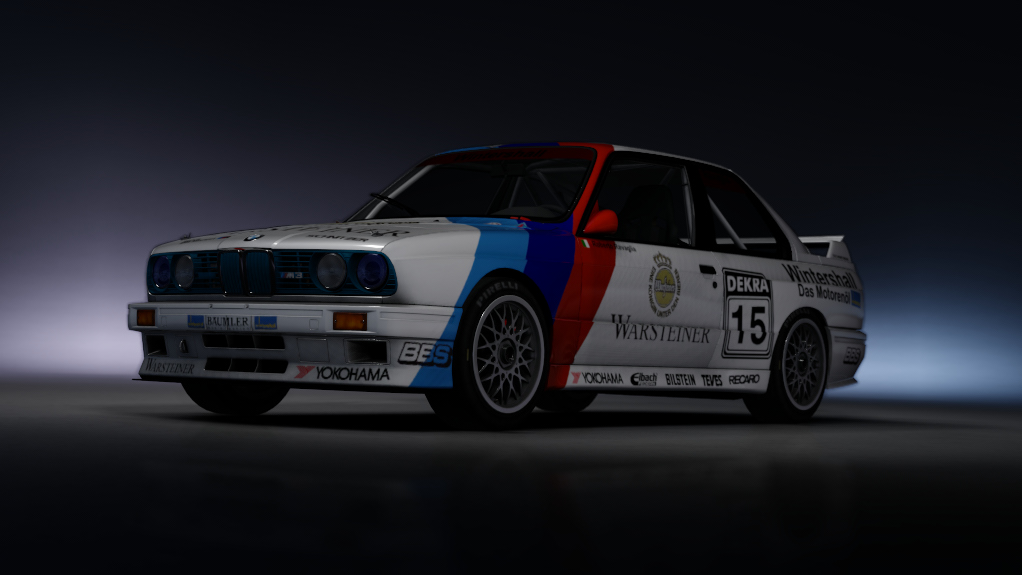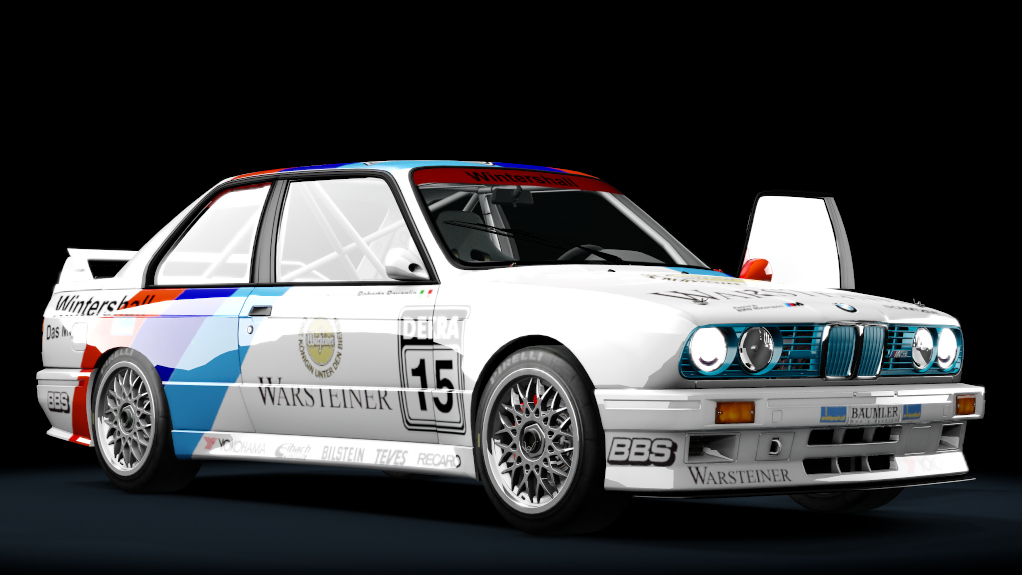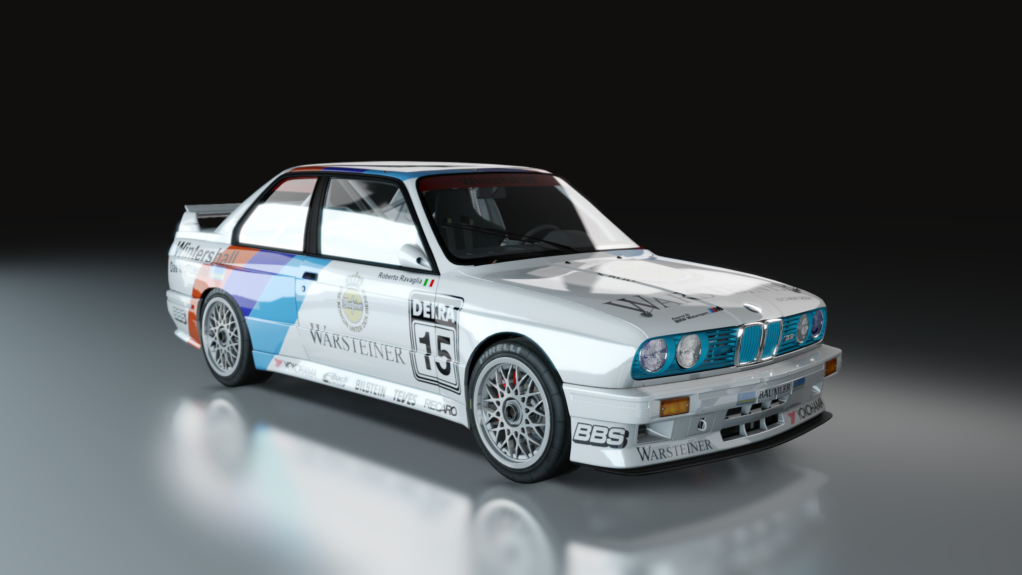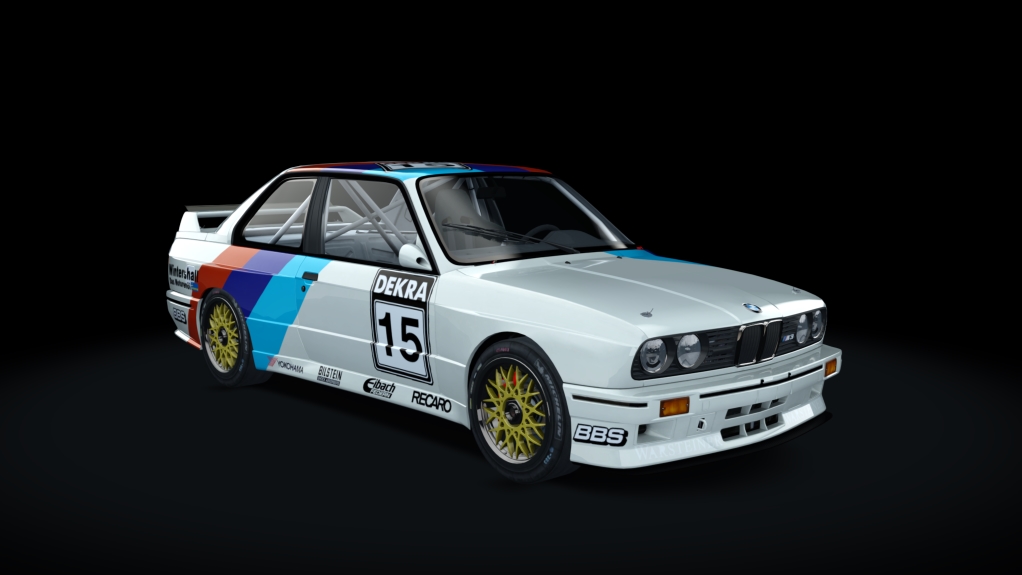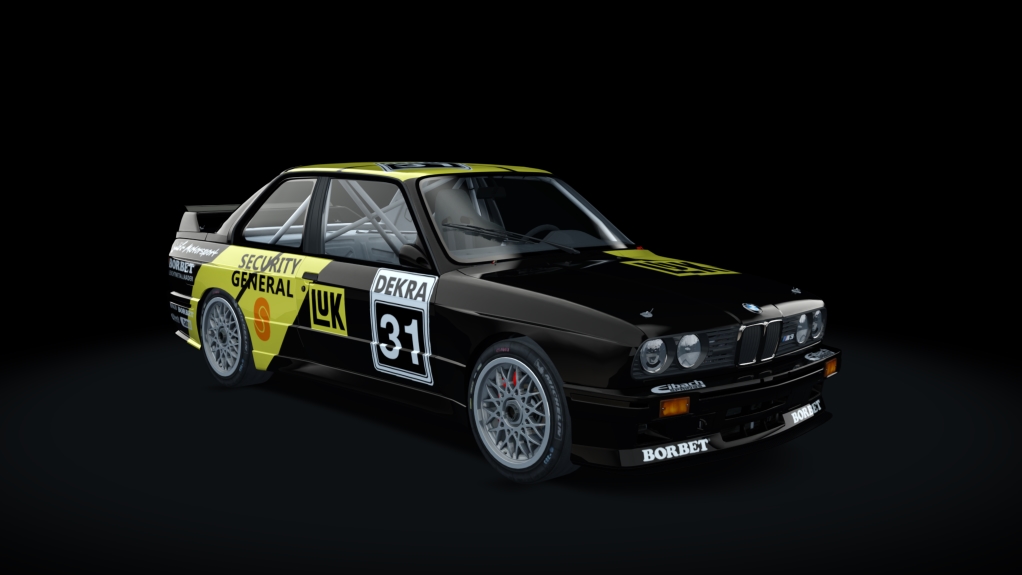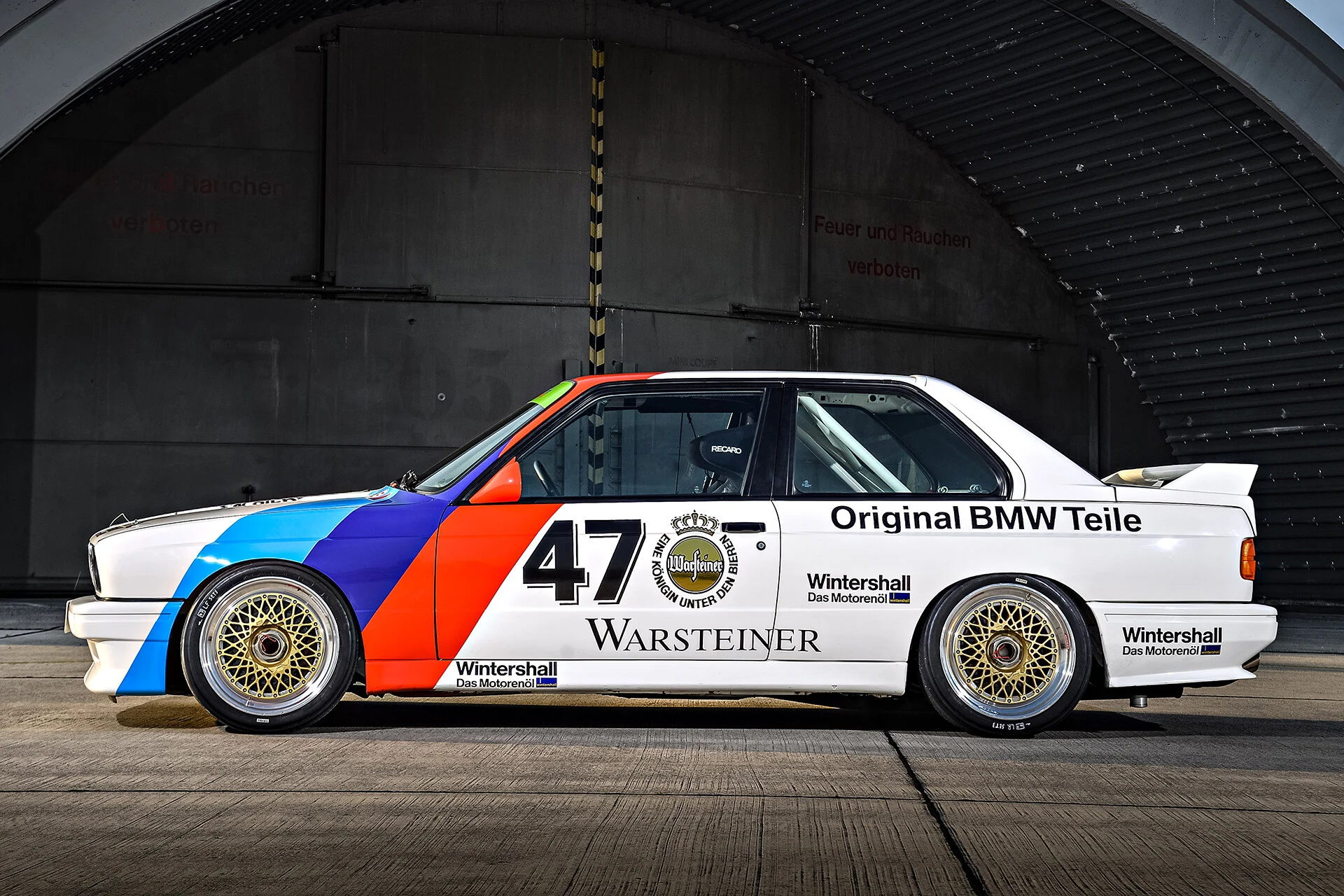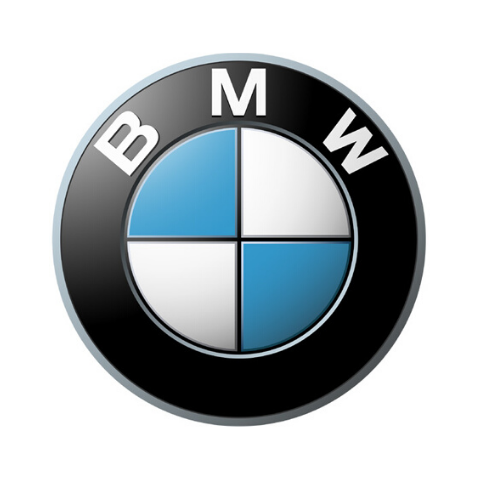1986 BMW M3 E30 dtm

The development of the racing version of the BMW M3 E30 began in 1986 under the direction of Paul Rosche, the father of the M12 Turbo engine that powered Piquet's Brabham to victory in the F1 World Championship in 1983. To satisfy Group A regulations, the development and homologation required the car to be derived from a road-going car, which is why the Motorsport division decided to choose the youngest and most compact car in the range as a starting point, the E30 2-door saloon, and gave it a thorough workover: a revised chassis, enlarged track, broader fenders and various changes to the bodywork, including the addition of a striking wing, and of course a racing engine. The four-cylinder, 2,302cc S14 engine that produced about 300hp (200hp in the road-going version) was preferred to the six-cylinder alternative in order to save weight and because of its higher 9,000 rpm rev limit. Its debut in the DTM 1987 series was an immediate success with Eric van de Poele winning the championship, a victory repeated two years later with Roberto Ravaglia. The M3 E30 isone of the key symbols of BMW’s sporting history and is easily recognizable with its Warsteiner livery.
